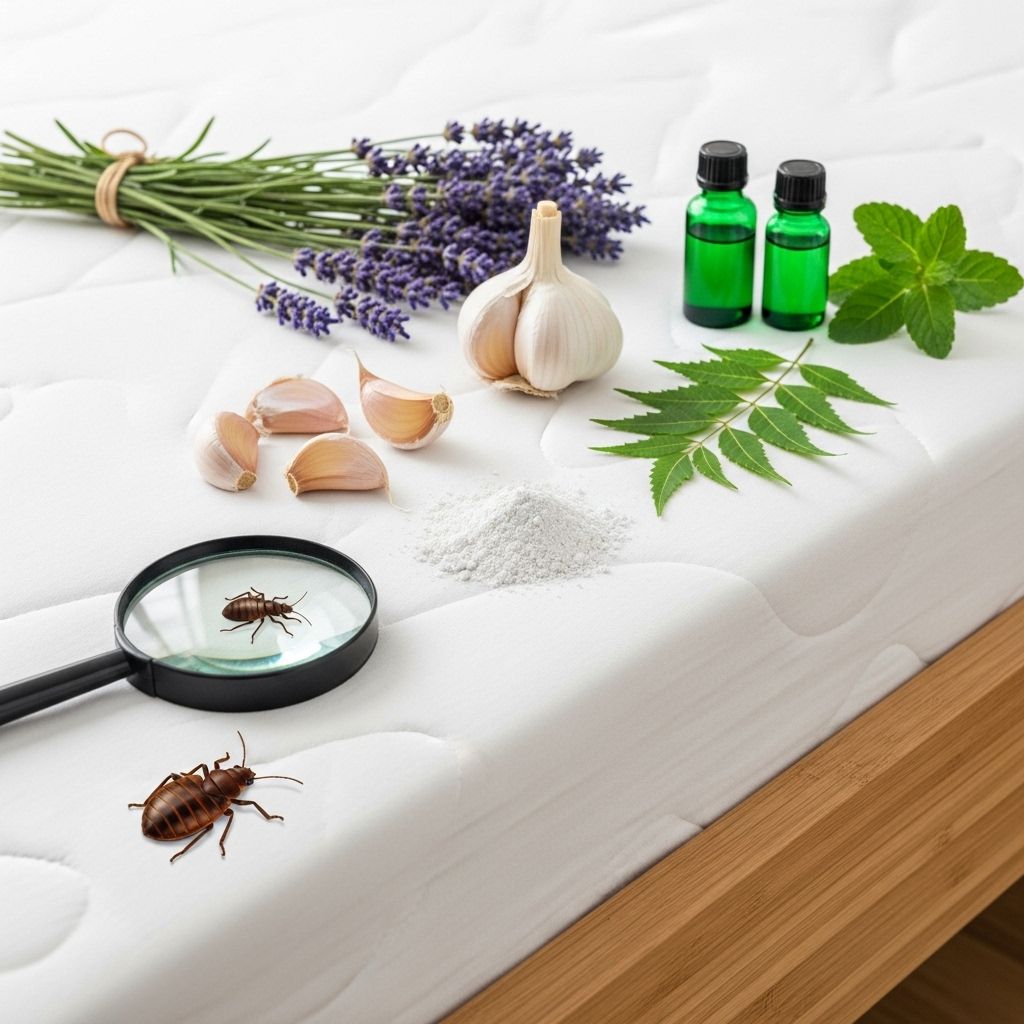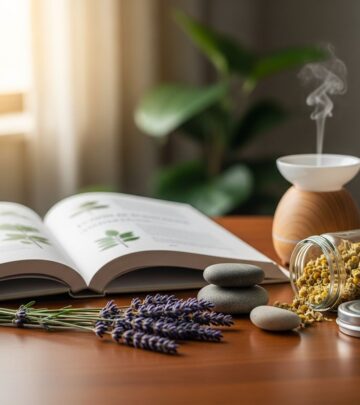Comprehensive Guide: Effective Home Remedies for Bed Bugs and Natural Solutions
Discover natural, effective home remedies to tackle bed bug infestations and protect your living spaces.

Bed bug infestations have become an increasingly common issue in households worldwide, causing significant discomfort and stress. Whether you’ve found telltale bites or spotted the tiny pests themselves, learning how to safely and effectively address the problem is essential. While professional extermination is often necessary for severe infestations, many homeowners turn to proven home remedies for bed bugs as the first line of defense. This guide dives deep into natural solutions, DIY treatment methods, and essential prevention strategies to help you reclaim your sleeping spaces.
Table of Contents
- Understanding Bed Bugs
- Signs of Bed Bug Infestation
- Are Home Remedies Effective?
- Natural Bed Bug Treatments
- Herbal Oils & Plant-Based Remedies
- Mechanical & Physical Methods
- DIY Chemical Alternatives
- Heat & Freezing Techniques
- Prevention Tips: Keeping Bed Bugs Away
- Safety Considerations with DIY Treatments
- When to Seek Professional Help
- Frequently Asked Questions (FAQs)
Understanding Bed Bugs
Bed bugs (Cimex lectularius) are small, wingless insects that feed on the blood of humans and animals. They are nocturnal, hiding during the day in cracks, mattress seams, or behind furniture, and emerging at night to feed. Though bed bugs do not transmit diseases, their bites can cause itching, allergic reactions, anxiety, and insomnia. Early intervention is critical for successful management.
Signs of Bed Bug Infestation
- Clusters of small, itchy, red bites on the skin, often in a line or zigzag.
- Tiny blood stains or rusty spots on sheets and pillowcases.
- Look for dark fecal spots (about the size of a pinhead) on bedding, mattresses, or walls.
- Molted skins, shed casings, or live bugs in mattress seams and nearby crevices.
- A musty, sweet odor if infestation is heavy.
Identifying these signs early can make home remedies more effective before pests multiply.
Are Home Remedies Effective?
Natural and home-based remedies offer eco-friendly alternatives to chemical pesticides. However, their effectiveness may vary depending on the severity of the infestation and correct application. Most home remedies can reduce bed bug populations but may not eliminate an infestation entirely, especially if eggs and hidden bugs remain. For persistent, large, or recurring populations, professional intervention may be required.
Natural Bed Bug Treatments
Below are the most widely recommended and researched home remedies for addressing bed bugs, each categorized by approach.
Herbal Oils & Plant-Based Remedies
- Lavender Oil: The scent of lavender is pleasant to humans but repels and can kill bed bugs. Apply diluted lavender oil as a spray on mattresses, bed frames, and closets. For maximized effect, wash linens with lavender soap or spread dried lavender leaves in infested areas.
- Tea Tree Oil: Known for its antimicrobial properties, diluted tea tree oil can suffocate and repel bed bugs when sprayed generously. Use a solution of 20 drops in water, but note that undiluted tea tree oil is not safe for direct skin or breathing exposure.
- Peppermint & Mint Leaves: Mint oils and crushed leaves are natural repellents. Place fresh mint or peppermint leaves under mattresses or in closet corners, replacing them regularly. You can also mix peppermint oil with water to spray on surfaces.
- Cayenne Pepper Solution: Combine a teaspoon each of cayenne pepper, ground ginger, and oregano oil in water, strain, and use as a spray to kill bed bugs on contact.
- Lemongrass & Clove: Both lemongrass and clove (including their oils) serve as repellents and can kill bed bugs due to their high acidity and strong odor. Spray diluted oils or place leaves in hot spots.
- Black Walnut Tea: Used tea bags can dry out bugs and also repel them. Place them in infested nooks, crannies, and bedding folds.
- Bean Leaves and Indian Lilac: These leaves physically trap bed bugs using tiny hairs or act as repellents. Fresh leaves spread under beds and in rooms can deter bug movement and breeding cycles.
- Thyme and Sweet Flag: Burning a thyme stick near infested areas or spraying solutions made from sweet flag (a wetland plant) can send bed bugs packing. Ensure to exercise caution with open flames and repeat the process every few days.
- Pyrethrum: This natural extract from chrysanthemums attacks bed bugs’ nervous systems. Though safer than synthetic chemicals, use according to natural pest control guidelines.
Mechanical & Physical Methods
- Vacuuming: Thoroughly vacuum mattresses, box springs, couches, and floors (especially along seams and cracks). Dispose of vacuum bags immediately in an outdoor bin to prevent reinfestation.
- Steam Cleaning: Use a hand-held steam cleaner on mattresses, furniture, carpet edges, and baseboards; bed bugs and their eggs are vulnerable to temperatures above 115°F (46.1°C).
- Stiff Brushes: Scrub mattress seams and furniture joints with a stiff brush to dislodge eggs and juvenile bugs.
- Silica Gel: Crush silica gel packets (often found in packaging), sprinkle the powder in crevices, and vacuum up after a day. Silica absorbs moisture from the bugs’ exoskeletons, causing dehydration and death.
- Sticky Traps: Place sticky pads or double-sided tape around furniture legs and along baseboards to catch migrating bugs.
DIY Chemical Alternatives
- Diatomaceous Earth: This fine powder, made from fossilized plankton, damages bed bugs’ exoskeletons and leads to dehydration. Sprinkle generously in problem areas—mattresses, cracks, bed legs—but avoid airborne inhalation. Clean up excess after a few days with a vacuum.
- Rubbing Alcohol (Isopropyl Alcohol): Spray directly onto visible bugs and infested surfaces; rubbing alcohol kills on contact but evaporates quickly and does not reach eggs or deep hideouts. Use with extreme caution, as it is highly flammable and not suitable for treating entire rooms.
- Beauveria Bassiana: A parasitic fungus used in some biological treatments, available in some natural pest control shops. It targets the bug lifecycle by infecting and killing the insects.
Heat & Freezing Techniques
- Laundering: Wash all infested bedding, curtains, and clothing in hot water (at least 115°F) and dry at the highest setting for at least 30 minutes. This kills both live bed bugs and their eggs.
- Heat Treatment: Bag infested items (such as pillows or plush toys), and place them throughout a hot day in direct sunlight or a car, reaching temperatures above 120°F for 60–90 minutes.
- Steam: Use a steam cleaner with a wide nozzle on all suspected hiding spots: mattresses folds, sofas, cracks, and carpets.
- Freezing: For items safe to chill (such as shoes, books, or electronics), seal in a bag and place in a deep freezer at 0°F for at least four days to kill bugs and eggs.
Prevention Tips: Keeping Bed Bugs Away
- Use bed bug-proof encasements on mattresses and pillows to trap any bugs and prevent new introductions.
- Reduce clutter in bedrooms and around beds, limiting hiding spots.
- Vacuum frequently and empty the canister immediately into a sealed outdoor bag.
- Inspect secondhand furniture closely before bringing indoors.
- Keep beds and furniture several inches away from walls, and avoid letting linens touch the floor.
- Seal cracks in walls, floors, and furniture to close off hiding and nesting sites.
- After travel, launder clothes immediately and inspect luggage before storing.
Safety Considerations with DIY Treatments
While many home remedies and natural solutions are safer than chemical pesticides, it’s important to exercise caution. Undiluted essential oils, rubbing alcohol, and powders like diatomaceous earth can pose risks to children and pets if misused. Always dilute oils, avoid inhaling powders, and restrict treatments to infested areas. Never use open flames or heaters in unsafe conditions; heat treatments should be monitored to prevent fire hazards. If allergy or skin irritation occurs, discontinue use and ventilate the area thoroughly.
When to Seek Professional Help
Home remedies may not suffice for moderate or severe infestations, especially once bed bugs spread across rooms or resist treatments. If after multiple applications the pests persist, or if your home contains many hiding spots (cracks, clutter, multiple rooms), professional pest control with specialized equipment and insecticides becomes necessary. Some professional services combine heat treatment, vacuuming, and targeted pesticides for maximal effect.
Frequently Asked Questions (FAQs)
Q: Can essential oils alone eliminate an entire bed bug infestation?
Essential oils such as lavender, peppermint, or tea tree may kill or repel some bed bugs on contact but generally cannot reach bugs or eggs hidden deep in cracks, seams, or folds. They are best used alongside mechanical or heat treatments for partial relief or prevention.
Q: Are home remedies safe for children and pets?
Always use caution. Keep essential oils diluted and avoid direct skin contact; do not apply remedies to sleeping areas used by infants or pets without consulting a health professional. Diatomaceous earth must be food-grade and used in small, targeted amounts.
Q: What is the fastest home remedy for immediate relief?
Washing bedding and clothing at high temperatures, followed by drying on the hottest setting, kills bugs and eggs quickly. Steam clean mattresses, bed frames, and sofas for immediate effect.
Q: Can I get rid of bed bugs using only vacuuming and steam?
Persistent and thorough vacuuming, followed by steam cleaning, can dramatically lower populations but may not eliminate a heavy infestation. Repeat treatments are often required, and some eggs or hidden bugs may survive, necessitating other control methods.
Q: How can I prevent bed bugs when traveling?
Always inspect hotel rooms for bed bug signs (stains, bites, musty odor), keep luggage off beds/floor, and launder travel clothes immediately upon returning home. Use protective encasements for suitcases if possible.
Conclusion
Dealing with bed bugs can be daunting, but knowledge and persistence make a significant difference. While natural remedies, physical methods, and diligent cleaning can reduce or control minor infestations, severe or persistent problems may require professional extermination. Safety and consistency are key: integrate multiple remedies, follow prevention tips, and monitor the affected areas regularly to maintain a comfortable, pest-free home.
References
- https://www.orkin.com/pests/bed-bugs/diy-bed-bug-treatment
- https://www.sleepadvisor.org/home-remedies-for-bed-bugs/
- https://www.healthline.com/health/healthy-home-guide/how-to-get-rid-of-bed-bugs
- https://www.epa.gov/bedbugs/do-it-yourself-bed-bug-control
- https://www.nectarsleep.com/posts/how-to-get-rid-of-bed-bugs-naturally
- https://www.youtube.com/watch?v=hsDqYwWNxYg
- https://njaes.rutgers.edu/fs1251/
- https://www.mayoclinic.org/diseases-conditions/bedbugs/diagnosis-treatment/drc-20370005
Read full bio of medha deb












